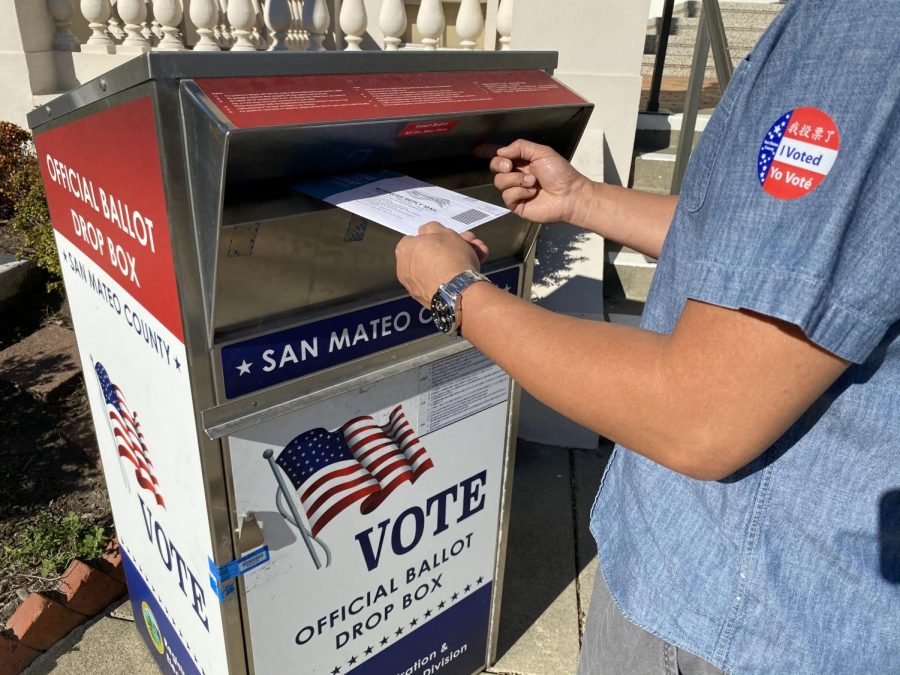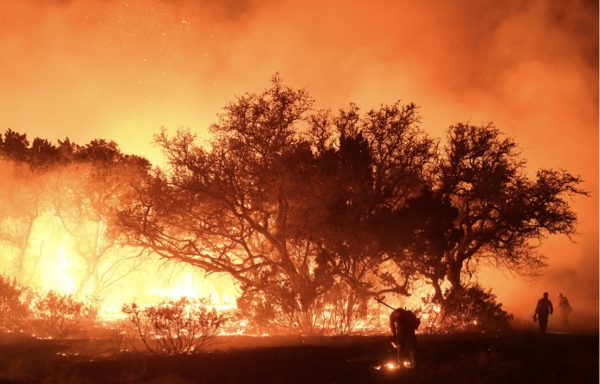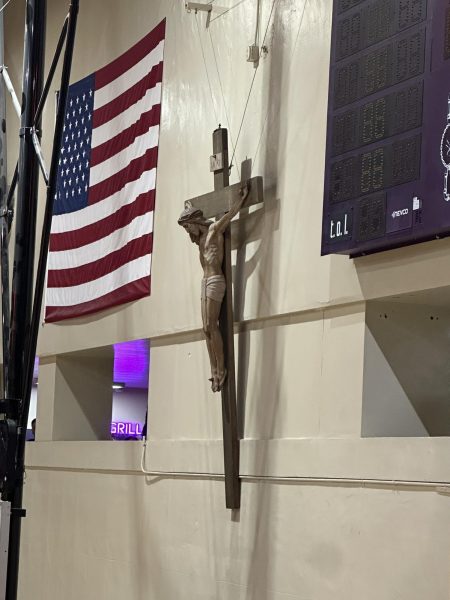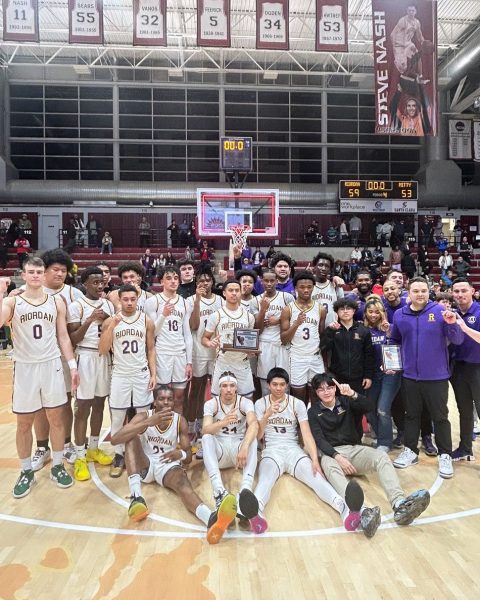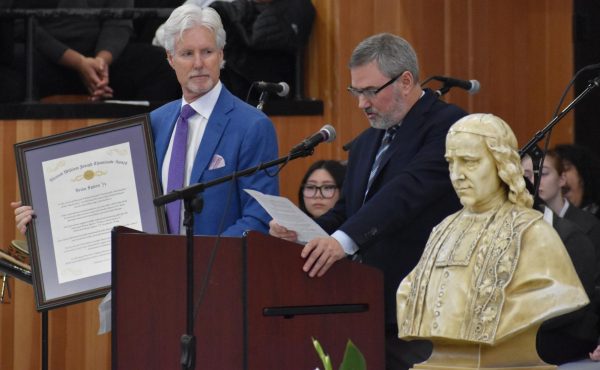This election year, America decides: Trump or Biden
More voters cast their ballots by mail this year than any previous election.
November 3, 2020
The 2020 election is now in the home stretch. What started as a diverse field of Democrats who were determined to take on President Donald Trump, has now turned into a race between former Vice President Joe Biden and Donald Trump.
This summer, both the Democratic and GOP primary season came to an end. In August, the focus was on whom Joe Biden was going to choose as his running mate. He had announced he would pick a woman and more specifically, a woman of color after the death of George Floyd. On Aug.11, Kamala Harris accepted the role of being Biden’s running mate over a Zoom call. Shortly after, news broke that the California senator could become the first woman, the first South Asian American, and the first Black vice president if elected.
On the Biden-Harris ticket, AP Government teacher Jeff Isola ’98 said, “The role of the vice-presidential nomination is to ‘balance the ticket,’ and Harris was the ideal pick to make up for what many consider to be Biden’s liabilities: Biden is old, Harris is younger, Biden is a career Washington politician, Harris is new to the Hill, Biden is a white male, Harris is a multiracial woman, Biden tends to be a moderate, Harris more progressive — if the goal was balance, Kamala Harris ticks all the boxes.”
Coral Shafer ’21 added, “I believe Kamala Harris is a really smart choice as a running mate for Biden … Biden choosing Harris is a very important decision because she is a woman of color in America who has a lot of valuable experience within politics. She offers a valuable perspective not only as a woman of color but as someone younger than Biden and this appeals to voters.”
Maxwell Meadows ’21, though, has a different point of view. “It’s obvious Harris wasn’t a fan of Biden especially during their respective campaigns this past year and a half, but his choice has little to do with those disagreements. One could argue that by choosing her, Biden is openly bringing a wider, broader set of beliefs into the White House and his cabinet but to me, it looks as though another example of identity politics.” He added, “… it’s not too far fetched to think Biden saw an opportunity to choose not just a woman, but a woman of color to use as material for pandering to voters.”
From Aug. 17 to Aug. 20, the Democratic National Convention took place. The Democrats took to the floor to tell the American public why former Vice President Joe Biden and Senator Kamala Harris are the ideal candidates to defeat the Republicans. Biden and Harris both accepted the nomination for president and vice-president from the Chase Center on the Riverfront in Wilmington, Delaware on night three and four respectively.
From Aug. 24 to Aug. 27, the GOP’s convention took place. Mike Pence gave his acceptance speech from Fort McHenry in Maryland and Donald Trump accepted the nomination from the White House. … the tone and narrative of the two conventions couldn’t have been more drastically different. — Jeff Isola '98
“I hardly feel that anyone’s opinions of the two candidates changed as a result. The Democrats chose to highlight the diversity of their party, including running the first African-American woman on a major ticket, and the Republicans chose to (literally — looking at you, Kimberly Guilfoyle) shout exceptionalist rhetoric.”
The race for a vaccine for the coronavirus is shaping these final months of the election with Trump claiming that a vaccine would be ready for distribution in October, which contradicted the CDC’s timeline. Trump has come under fire for being caught on tape during an interview with Bob Woodward in February admitting he knew how risky the virus was and saying that he always wanted to downplay the threat to not cause chaos amongst Americans.
“It is clear to all of us that President Trump responded poorly in terms of cracking down on Covid-19 precautions,” Shafer said. “He is cited on tape saying himself that he downplayed the threat of Covid-19. He blames China in a series of tweets for bringing Covid-19 into the world, yet it was his responsibility to coordinate the United States’ response to the pandemic. Looking at countries such as New Zealand, who have been COVID free for months, we see how poor and late of a response the United States had under Trump.”
On Oct. 1, Hope Hicks, a close aide to the president who traveled with him on Air Force One, tested positive for the coronavirus. This led to the president and the First Lady also testing positive, as President Trump, announced to the world via Twitter that they had tested positive for COVID-19.
That same afternoon, Trump was taken to Walter Reed National Military Medical Center in “an abundance of caution.” Between the day he arrived until his release, there was confusion about the state of the president’s health with his physician, Sean Conley, during press briefings avoiding key questions about the president’s health.
On Oct. 5, Trump was discharged from the hospital, taken back to the White House, and almost immediately removed his mask when he reached the top of the South Portico balcony.
In regards to mail-in voting, which will play a big role in this election, Isola said, “People need to remember that elections are run by each state, NOT the federal government. So the question about mail-in ballots varies by state — yes the postal service is run federally, and, according to most experts, mailing in ballots would not overwhelm the postal system (which has always been reliable). Sadly, this has also become a political issue – there has been nothing to prove that voting through the mail doesn’t work.”
Trump has recently avoided the question of whether or not he will commit to a peaceful transition of power if he were to lose the election.
“It’s almost guaranteed that the projected loser will contest the results,” said Isola. “The only good news is that there are layers of safeguards in place to ensure that both the election process and tallying of votes is valid — if it ends up going to the Supreme Court (like in 2000), this concept will become evident. As for the way people react to the results, no one can predict that.”


